This article will teach you how to Dehydrate Fruits and Vegetables. We have been looking for healthy options for snacking and dried fruits seem to be a good place to start. We bought some apples from the local grocery store to test out our new dehydrator. When the weather is warm we will purchase fruits and vegetables from local farmer’s markets and in the Fall we pick our own fruit at a local farm.
For vegetables we dehydrated green beans and peas but found out that won’t be good for snacking as they turn out hard once the process is done. We will use those for soups and casseroles. Dried beans and peas last longer than frozen beans and peas. By the end of May we will be planting our own garden so we will have a fresh supply of fruit and vegetables.
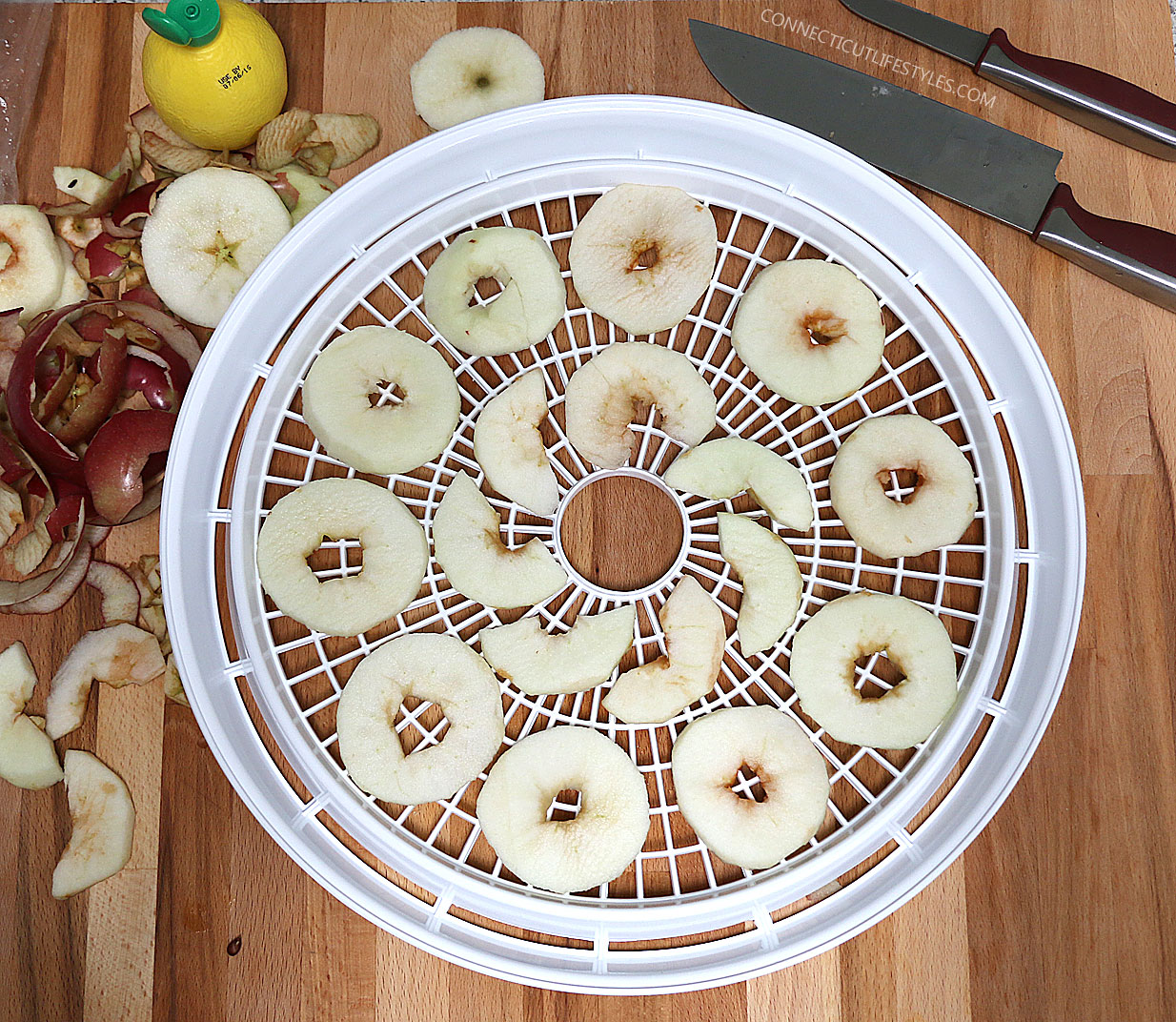
What are the best foods to dehydrate?
To get the most out of dehydrating fruits and vegetables, we suggest you use organic when you can because organic fruits and vegetables have been grown the natural way and don’t contain any pesticides, herbicides or chemicals. If you’re making a conscience effort to “snack healthy” you should start out with the best produce possible.
If you’re wondering how to preserve your summer fruits and veggies, but don’t want to get into the whole pressure canning thing at home you should consider dehydrating! You can even buy canned or frozen fruits and veggies, and dehydrate those too.
Tips for Dehydrating Fruit:
Dehydrated fruits are good for snacking. You can dehydrate apples, strawberries, mangos, pears, bananas, blueberries, peaches, pineapples and more. If you want them for snacks, you want them a little less dry, so they stay chewy. If you want them for long term storage that you will re-hydrate (to bake with, for example) then dehydrate them until they are fully dry and on the crisp side.
- Less dry: chewy and yummy snacks.
- More dry: hard and longer storage, re-hydrate for baking.
How do you dehydrate strawberries in a dehydrator?
Strawberries will get super hard if left too long, so only let them dehydrate until they’re still pliable. You can also dehydrate orange peel and lemon peel and grind them in a coffee grinder to add to cakes and frostings.
Strawberries and Mangoes are done when you squeeze them and very little “squish” left. You can turn off the dehydrator and let them cool to test around 6-8 hours. Taste is a good way of checking. Pears are dry when they are pliable and no beads of moisture form when pressed between your fingers. Pears will be more leathery than apple. You treat your fruit first with lemon juice and water to keep them from turning brown. They dry faster when peeled as the peeling can get tough.
If the fruit/mangoes are odd sizes the smaller ones will dry first, so you may have to pick through and gather them first. You can always put them back in to dry longer, but if they are too moist they will mold if stored long term. You may want to store them using a Silica Gel Pack.
Tips for Dehydrating Vegetables:
Dehydrated peas and beans can be boiled as a side vegetable. Their texture will just be a little firmer than if you’d cooked them fresh. The same goes for corn, peas, and carrots. Zucchini re-hydrates really well, and so does spaghetti squash! Unfortunately you can’t dehydrate green beans to make those tasty snacks you get in the natural food aisles at the grocery store. You would need the ability to freeze-dry, and right now that doesn’t exist in an at-home device.
If you want to make the most out of your dehydrator, you should dehydrate things like mushrooms, kale, and other quickly spoiled veggies and then you can add them to soups and stews. Tomatoes can be dehydrated. Grind them up and use in place of tomato paste.
How long does it take to dehydrate kale?
KALE CHIPS also make great snacks. I sprinkle them with garlic powder and salt and olive oil and dry them. They are best eaten fresh as they get soggy if you try to store them. When they are dried they will look wet but they will be dry and crispy.
We decided to purchase a dehydrator to make things easier. Yes, you can use your oven but I really wanted a dehydrator that had trays with uniform openings and air that circulates. You can also see the fruit through the clear cover and pay more attention to it. For some reason I tend to forget things in the oven.
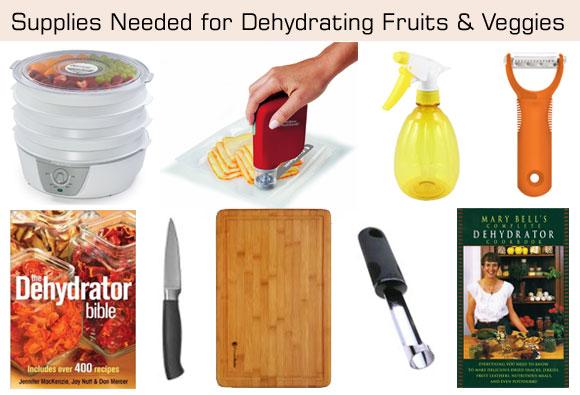
Supplies Needed to Dehydrate Fruits & Vegetables:
- fruit and vegetables
- dehydrator (or optional oven)
- apple corer
- paring knife
- potato peeler
- spray bottle (for lemon juice)
- lemon juice and water
- cutting board
- vacuum sealer (optional)
- zip bags or plastic storage containers
- recipe books for ideas
Some of our favorite Dehydrator Recipe Books:
- The Dehydrator Bible: Includes over 400 Recipes
- Mary Bell’s Complete Dehydrator Cookbook
- The Great American Jerky Cookbook
- Just Jerky: The Complete Guide to Making it
- Food Drying with an Attitude: Snacks, Meals, and Crafts
We did our first test run using our new Presto Electric Dehydro Food Dehydrator with some Macintosh apples. We only added two layers of apples to begin with, which was about 3 apples. I got tired of coring them by hand and learned that I could use a potato peeler and also a special corer tool. That saved my hands and the corer literally cored the apple in 1.5 seconds!
How to use a Presto Dehydrator
First step was to peel and core the apples. Next, I sprayed the apples with a mixture of lemon juice and water which I had added to a spray bottle. I suggest using half lemon juice and half water. Make sure to coat both sides. This helps the apples from turning brown.
Then I placed the sliced apples on the individual trays, making sure not to overlap them. I continued filling the trays until all of the apples had been placed on tray.
Next I plugged the dehydrator in and then put it on 125° and let it run.
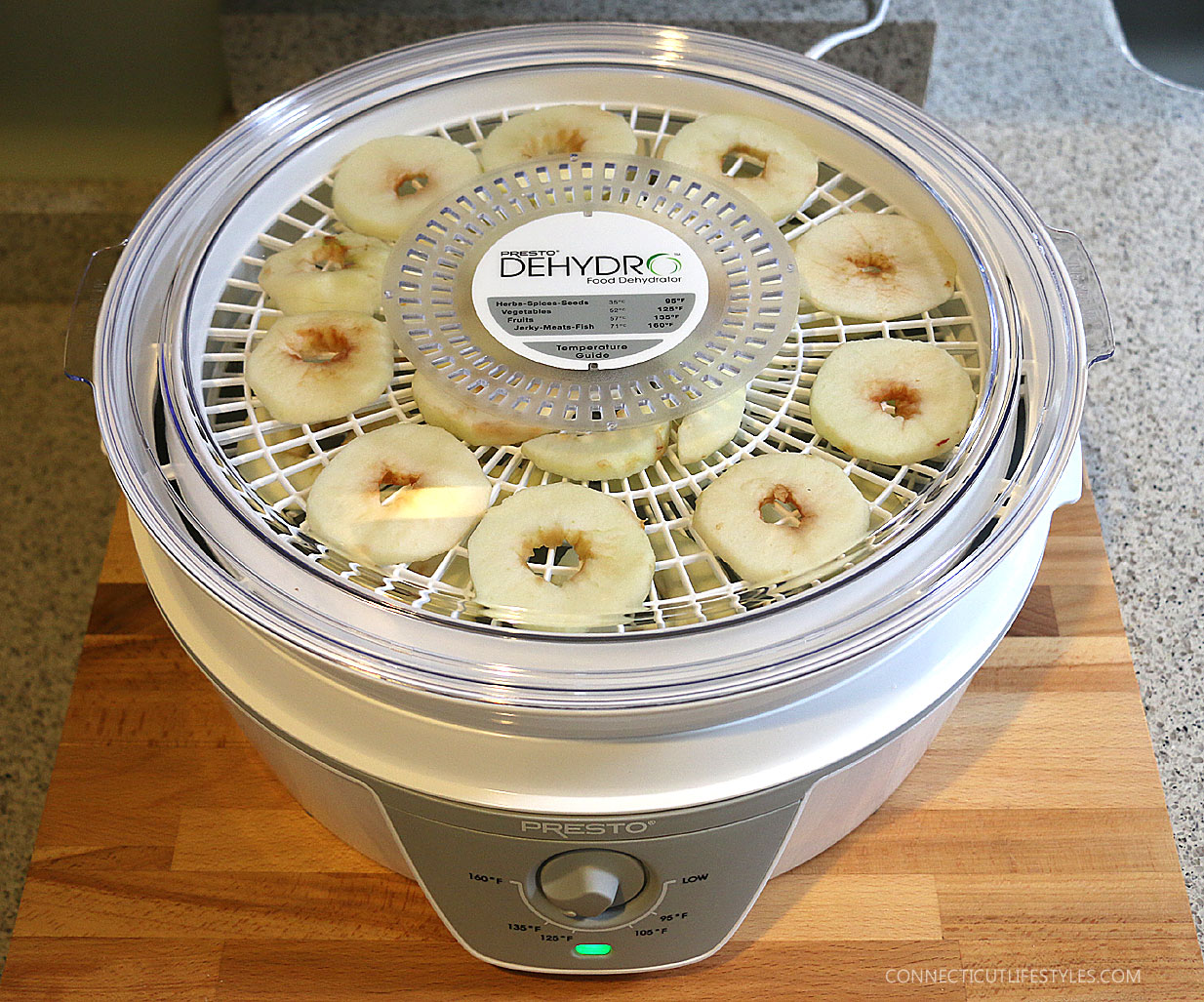
The Presto Dehydrator comes with 6 trays but you can buy 6 more trays for a total of 12. You can use up to 12 trays at the same time if you like. They stack on top of each other, leaving an even amount of space in between for even drying. When finished, turn them around and they stack inside of each other for storage. Drying trays and the cover are fully immersible and dishwasher safe.
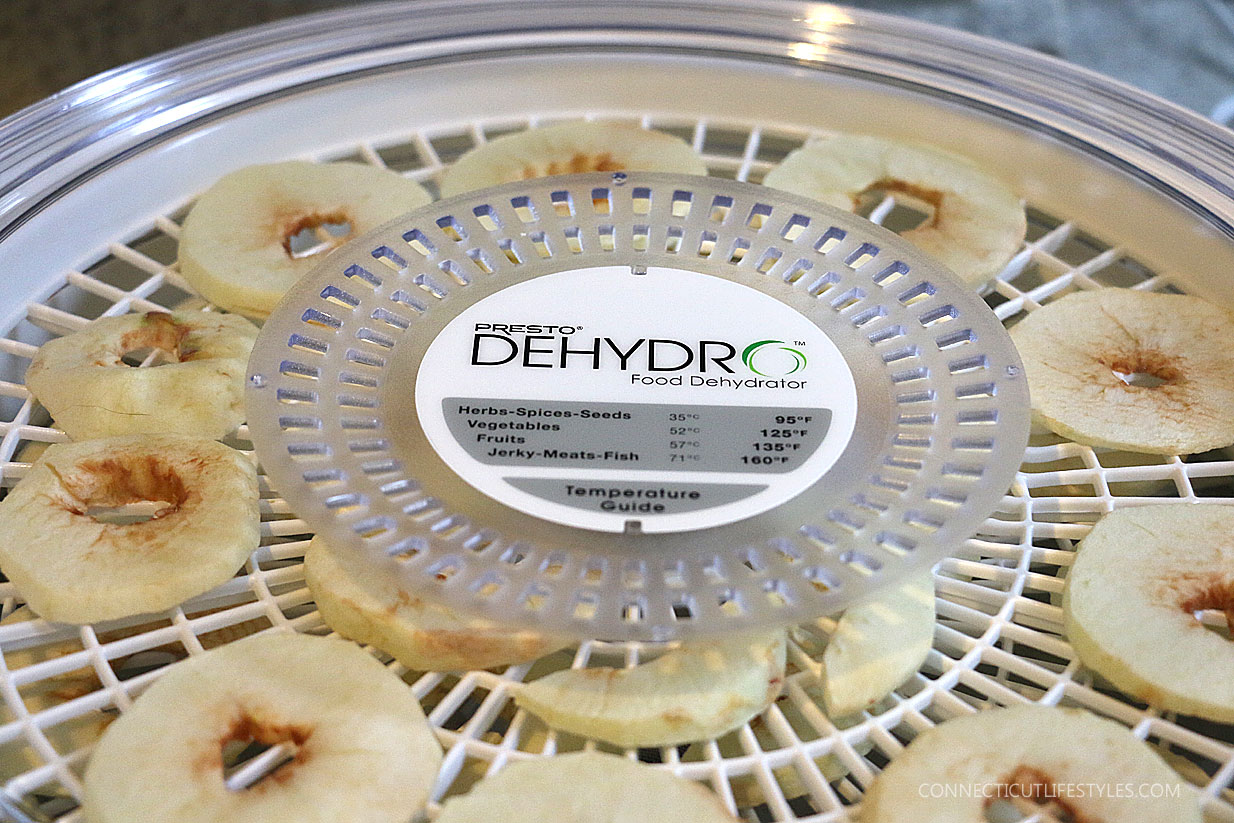
If you are dehydrating blueberries and other small berries and herbs, use the screen that comes with the Presto Dehydrator so they don’t fall through the holes in the regular trays. Just lay a screen on top of an existing tray. This model comes with two screens. They also include two “Fruit Roll-up” Sheets for making healthy fruit rolls and strips from fresh, frozen, or canned fruit.
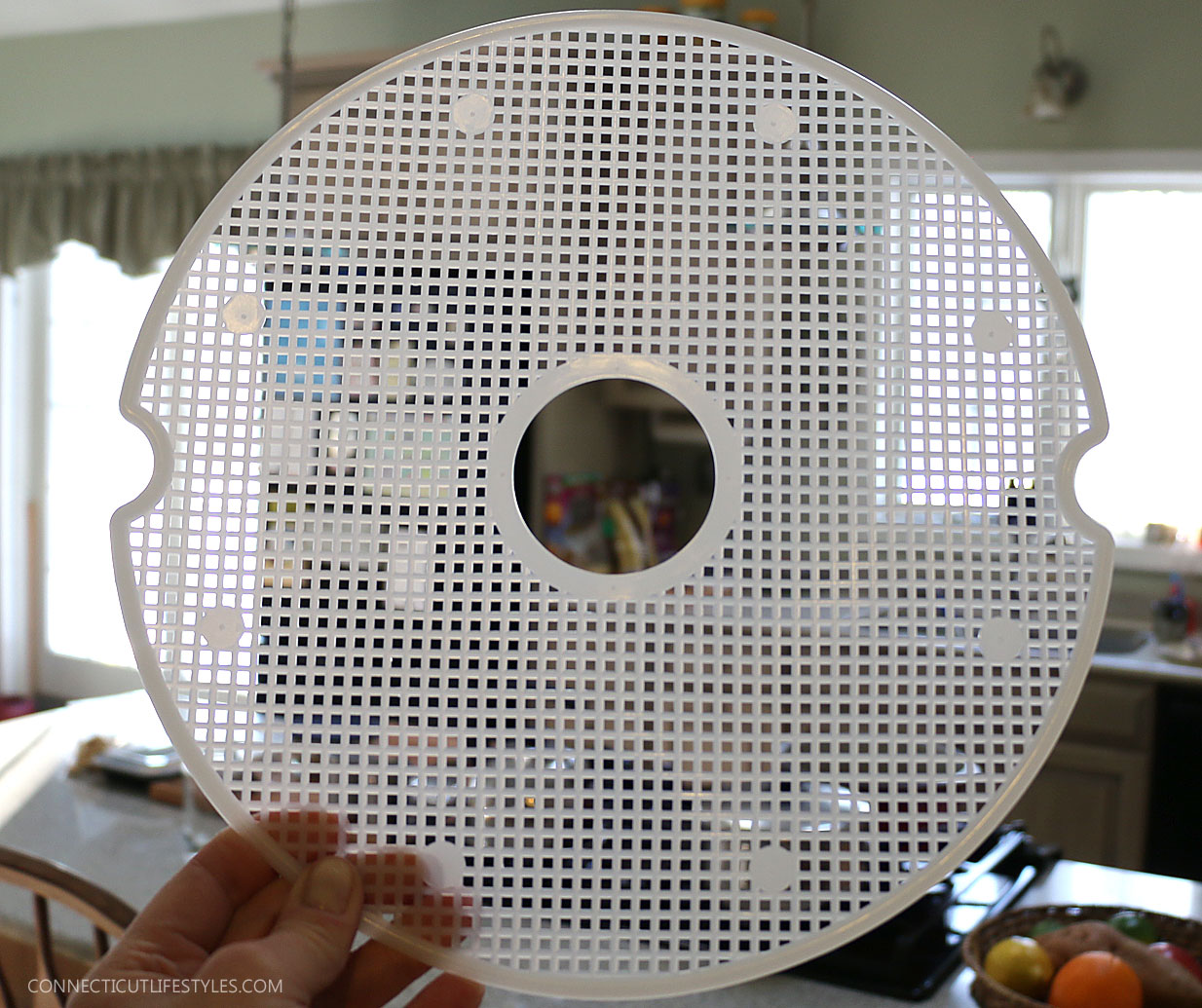
This particular Presto Dehydrator model comes with a temperature dial so you know what temperature setting you are using. It does not come with an ON/OFF switch, which would be nice. You have to unplug it when you are finished with your dehydrating session. It would also be nice if it came with a timer so it would shut off automatically. That might be available in a different model.
This dehydrator works really well. It is, however, very loud. I’d say it’s about as loud as our large humidifier when it runs. It also takes up quite a bit of space so you need to make sure you have a counter you can put it on that is big enough and also a place to store it. The bottom-mounted fan and heating element provide constant air flow when it is drying the fruit or vegetables so you will feel it slightly warm on the bottom. The bottom is raised up slightly so air flows underneath and this helps the fruit or vegetables dry more evenly without having to rotate the trays.

When the drying time was up, about 5 hours for our apple test, we had a nice bunch of dried apples. We plan on using them for snacking. Some were chewy while others were slightly crispy. That is because of how we cut them. It is very hard to get them precisely the same thickness so this is bound to happen.
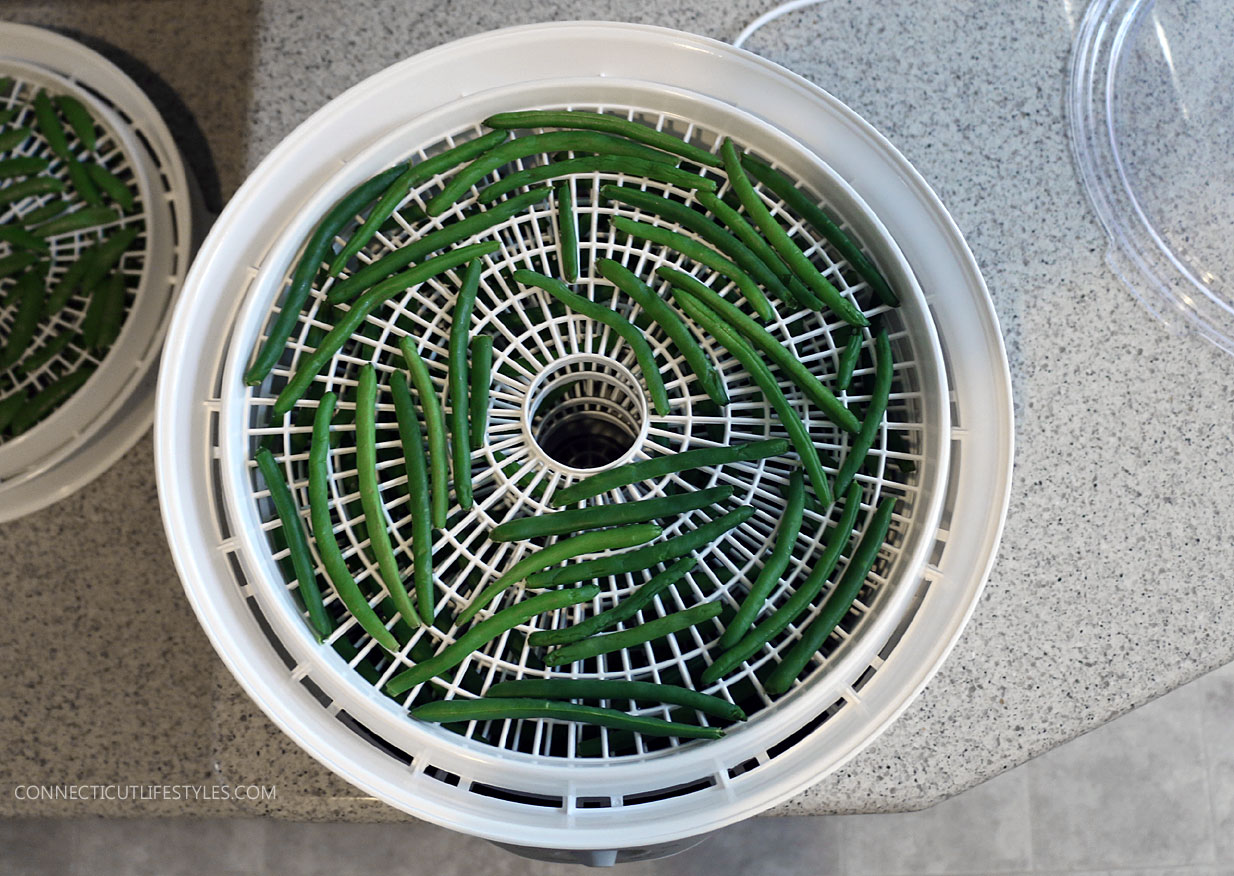
We dehydrated beans but like I mentioned above, but we aren’t going to use them for snacking. They will be too hard so we will store them to re-hydrate later for side dishes. Did you know that dehydrated vegetables last longer than frozen vegetables? You should vacuum pack them using a vacuum sealer though or they could grow mold and not last a long as you would like. Dehydrating vegetables from your garden is a great way to make your harvest last longer.
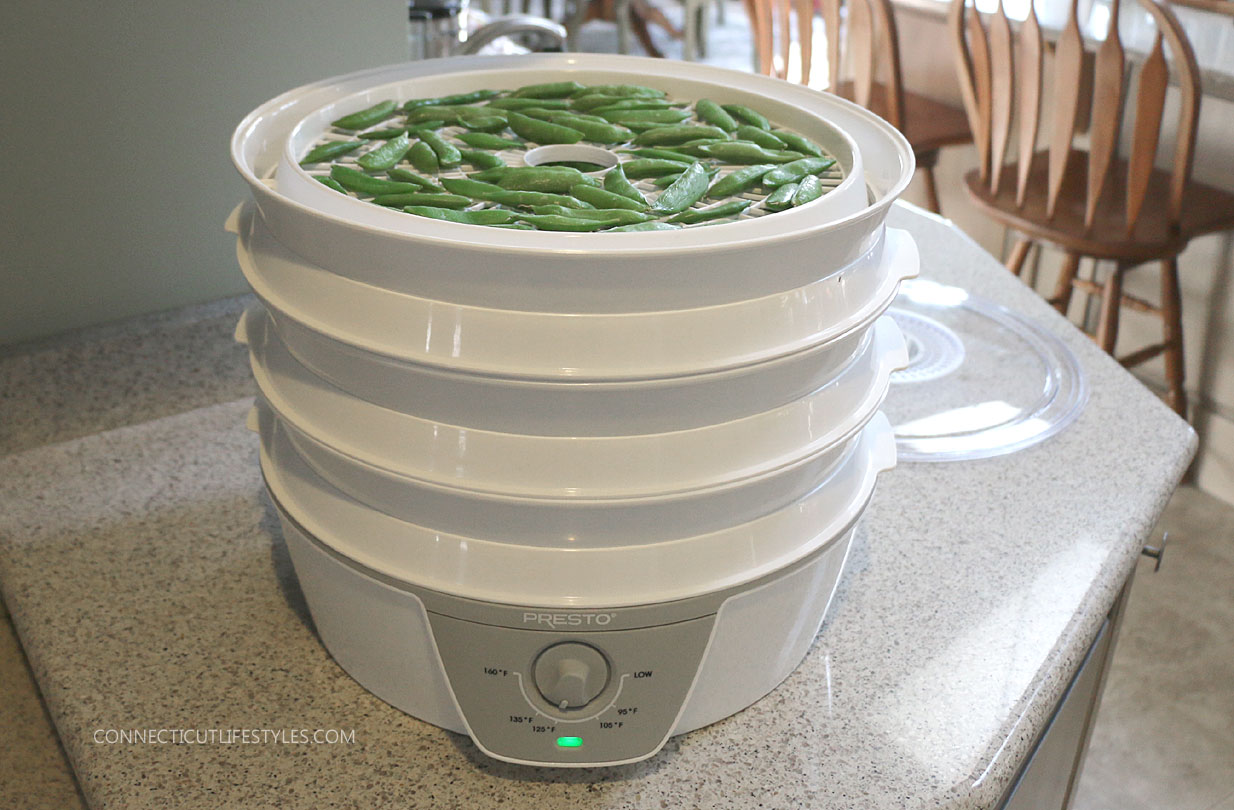
Here is a look at the strawberries we dehydrated. What have you dehydrated in your kitchen? What do you use them for? Cooking or snacking.
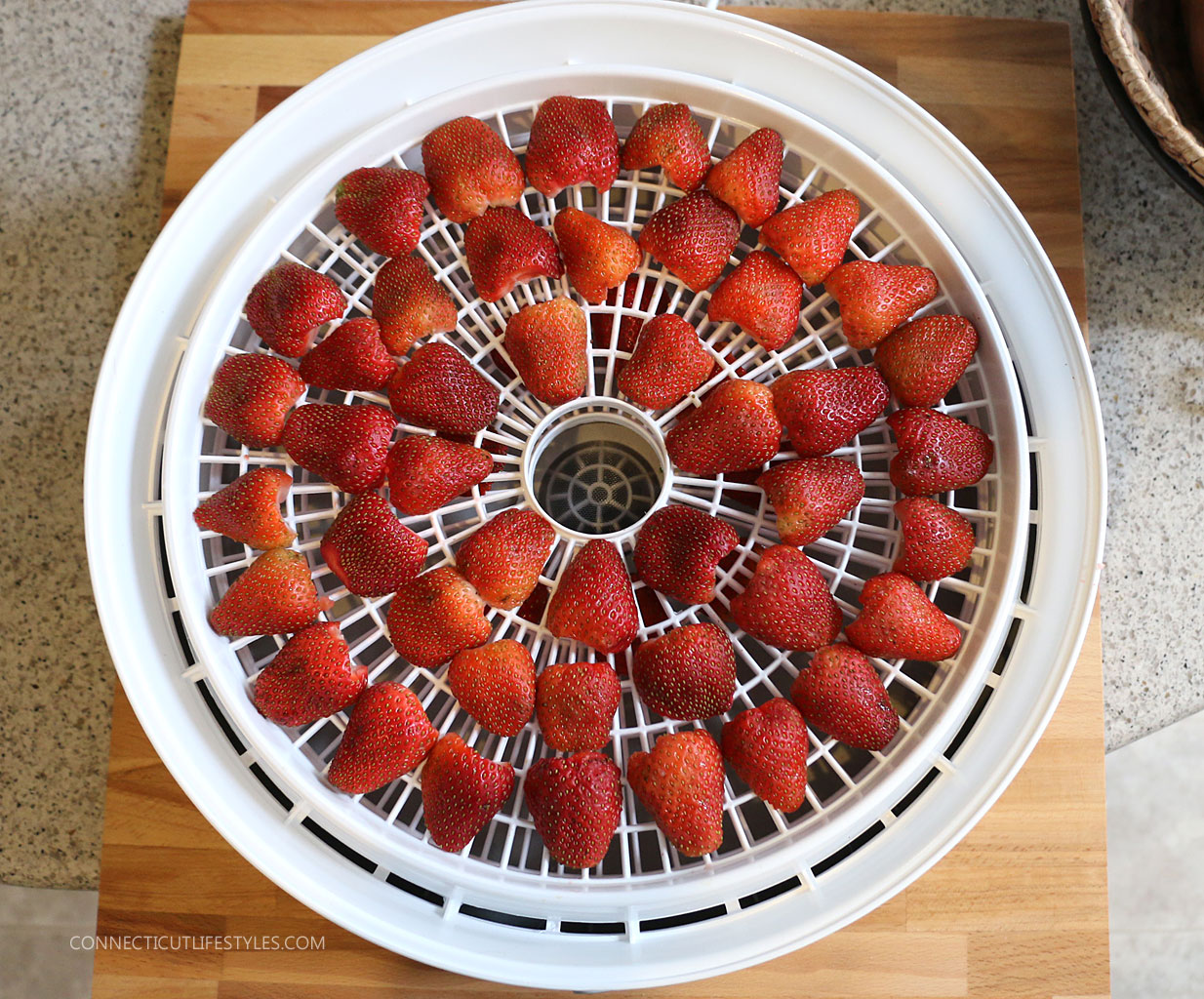





These looks great! What a wonderful way to save an overabundance of harvest!
Good Article Wendy Limauge
I recommend dehydrating for many reasons … it is a good way to take food that I bought with a recipe in mind but changed my mind due to an unforeseen circumstance. Rather than let them set and loose their freshness I dehydrate them for a later date,especially Mushrooms and Celery that will begin to wilt
I grow excess organic Heirloom Herbs, Veggies and Fruits with this in mind too. I grind up certain veggies to make a powdered veggie bullion.
I grow Heirloom Paste Tomatoes for this purpose as well and use this powder in place of paste (as you stated above).
Meats can be made into Jerky and are a high protein snacks. Glad to see your book by Mary Bell listed in your Article along side others, it was my introduction.
But my favorite food to grow and dehydrate are a large variety of herbs… makes great presents too!
These days I especially like KALE CHIPS as a snack. I sprinkle them with garlic powder and salt and olive oil and dry them. They are best eaten fresh as they get soggy if you try to store them. I like them better than potato chips. The other day I made them with Bok Chop leaves… the height of yummyliciousness to me. Good way to get my antioxidants while snacking. I also use spinach and other greens.
Hi wanted to ask if you still like your Presto dehydrator. I am thinking about purchasing the one you have or the digital one. Haven’t decided which one yet but am leaning toward one of these over all the others.
I would love to hear your input on how you feel about yours and any pros and cons you might have about it. Also if there is a reason you picked this one over the digital one. Would appreciate any and all the info you can share with me . Thank you. Look forward to hearing back from you. jm
Josie, we really like ours and use it weekly now. It works great and love how you can put the trays in the dishwasher. I’d say the only thing I don’t like is that it doesn’t have an ON/OFF switch or a timer but maybe another model that costs more does have that feature. What is the digital model you are referring to?